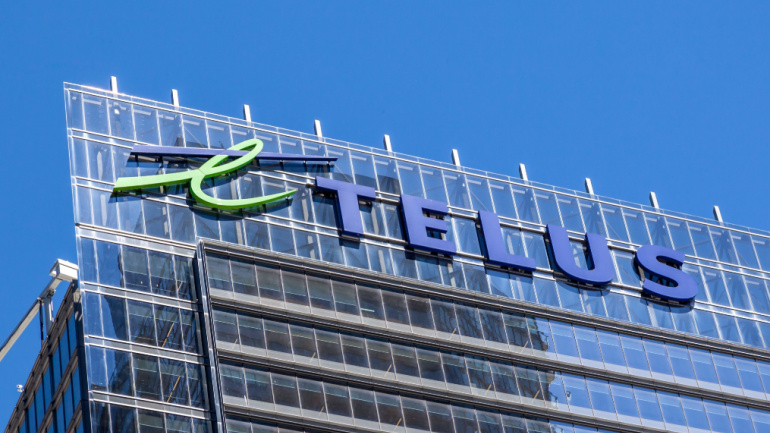Ericsson and twelve leading telecom providers have launched Aduna, a joint venture to accelerate global adoption of network APIs. Backed by major operators and cloud partners, Aduna builds on Ericsson’s secure platform and supports initiatives like Open Gateway to standardize APIs.
CSPs have been investing heavily in network technology to reduce expenses, but legacy voice infrastructure is holding them back. Cloud transformation can deliver better customer experiences, reduce costs, and increase scalability. AI will change customer engagement and revenue generation, with GenAI offering SMBs deep analytics from customer conversations. CSPs should focus on a modern, digital-first customer experience with self-service options. Alianza offers a cloud communications platform to simplify migration and operations for CSPs.
In a groundbreaking move, Beyond Now, a rapidly expanding ecosystem orchestration and digital platform provider, has introduced the Wave AI Suite. This innovative suCSite incorporates cutting-edge AI technologies, including Generative AI (GenAI) and Machine Learning (ML), seamlessly into its digital and ecosystem orchestration platforms.
As the digital revolution persists, Communication Service Providers (CSPs) are redefining traditional revenue streams, with data monetisation being key to their success. CSPs have transitioned from solely facilitating connectivity to enabling fascinating digital technologies. They’re effectively tapping into the vast quantities of data from their networks to drive valuable insights. For instance, Vodafone Portugal, aided by Celfocus, successfully converted raw data into significant insights to improve operational effectiveness.
The shift towards automation in communication service providers (CSPs) is somewhat paradoxical: while advancing in efficiency, it risks diminishing vital human interaction. A recent study by Omdia underlines this predicament, indicating that despite chatbots’ growing usage, consumers predominantly favor human contact, especially when seeking resolutions. Meanwhile, emails emerge as the main channel for consumer engagement, a revelation challenging cost-cutting efforts that bypass burgeoning automation.
Rising Ransomware Costs Versus Cybersecurity Countermeasures Industry reports indicate that hackers are thriving despite advancements in cyber defense. The median cost of ransomware attacks has doubled to $26,000 over the past two years, with 95% of incidents resulting in financial loss ranging from $1 to $2.25 million. Social engineering and phishing remain highly effective tactics due to the human element. Senior leadership is increasingly becoming a cybersecurity threat. Governments and law enforcement agencies are taking more decisive actions against high-profile attacks, but these measures mainly deter hackers from targeting less coordinated markets. IoT devices used in DDoS attacks have risen to 1 million, accounting for 40% of global DDoS traffic, necessitating stronger network security and awareness. Despite improved measures, hackers are expected to continue succeeding. Read the full article Viasat Selected for AFRL’s ARBALEST Program: Enhancing Tactical Space Connectivity Viasat Inc., a global communications company, has been chosen by the…
TELUS becomes the first North American CSP awarded ‘Running on ODA’ status, joining global giants in utilizing Open Digital Architecture to transform into agile digital organizations. Achieving cost and time reductions, TELUS delivers enhanced customer experience through cloud-native, vendor-agnostic solutions.
Nokia has released an update to its AVA Energy efficiency software, which now features improved algorithms and power-saving strategies, allowing communication service providers (CSPs) to achieve significant reductions in electricity use in their networks. The enhanced Nokia AVA Energy efficiency tool’s improved machine learning algorithms will allow CSPs to reduce power usage in their data centers, as well as network base stations, batteries and air conditioning units in telecom networks. Based on customer testing, Nokia AVA Energy efficiency software can reduce power use by up to 30%, which is an increase of around 10% from the original program. The upgraded solution enables operators to automatically shut down idle and underutilized equipment using algorithms. It also offers the possibility to entirely disconnect gear through remote power control modules. Businesses use Nokia’s AVA Energy efficiency software to reduce overall energy costs while addressing environmental sustainability issues in their operations.…
Artificial intelligence is exerting its influence on almost every sector, including telecommunications. This technology has begun to add impressive new dimensions to many industries, accelerating the digital transformation. According to Tractica, annual investment in telecommunications AI software is expected to grow to more than $11.2 billion in 2025. The telecommunications industry is at the heart of technological growth and digital transformation. The industry is huge. 54 telecommunications companies are listed on the Forbes Global 2000 list. They account for more than $3.4 trillion in assets and almost $1.5 trillion in income in 2020. The potential of AI in the telecom industry is immense. By taking advantage of this technology, organizations can create supplementary revenue streams using business niches they had not even thought could be profitable. The demand for higher quality telecom services and a better customer experience grows. Therefore, service providers need to look for smarter, more powerful and…
When a new technology or opportunity is created, it is up to industry verticals to decide how, when, and where to exploit its potential. Communication service providers (CSPs) will find it challenging to adopt and implement technology such as blockchain. We have already discussed the benefits and possibilities of blockchain for telecommunication providers. While the benefits of adopting blockchain in the telecommunications business are clear, putting the theory into practice may not come easily. It is important that Communication Service Providers (CSPs) work in synergy, looking beyond obvious solutions if they are to take full advantage of the potentially huge advantages distributed ledger technology can offer. The following advice on adopting blockchain are based on the onerous experience of early adopters of blockchain. Collaborating and sharing of information Telecommunications companies can substantially improve their services by sharing or joining forces with each other. It is vital that these companies work together…













